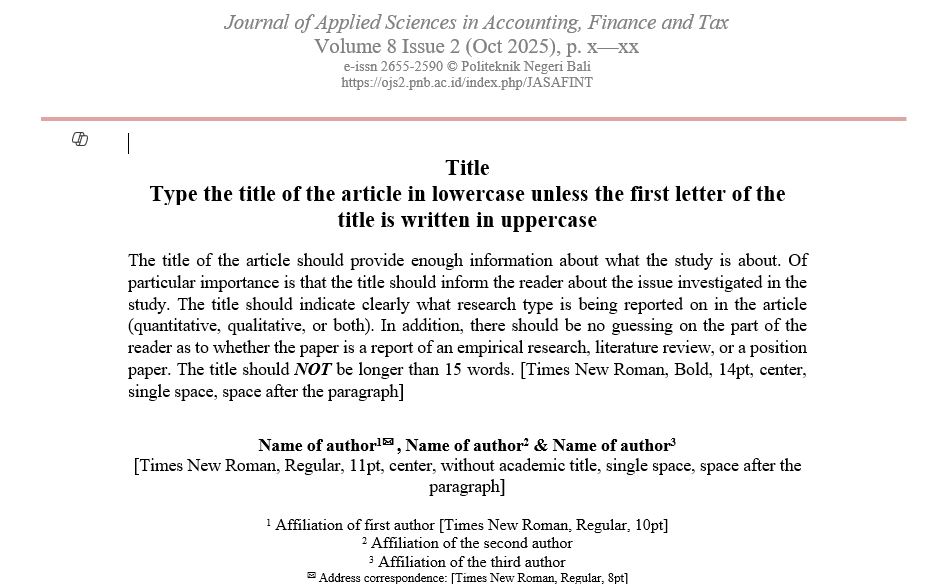Tax Planning Analysis Based on SAVANT Approach at PT ASP
DOI:
https://doi.org/10.31940/jasafint.v5i2.105-111Keywords:
Tax Planning, SAVANT, PPn, VAT, PPh, Income TaxAbstract
This study aims to determine and analyse the application of tax planning with the SAVANT approach. The issuance of SP2DK shows that the company has not been optimal in fulfilling its tax obligations. This can lead to potential taxes and tax sanctions. So that companies need good and correct tax planning in order to maintain the efficiency of their tax expenses. This study uses qualitative methods with descriptive analysis. The analysis is carried out by examining the fulfilment of corporate tax compliance and arrange tax planning policies based on the SAVANT approach. This study results showed that the application of the SAVANT method was carried out by analysing tax planning including the implementation of the Tax Article 21 and Tax Article 23 planning strategies by applying the gross up method. The company can anticipate, negotiate, and transform their expenses. Based on the analysis of the company's added value with EVA, it shows that the tax planning that has been designed can provide added value of IDR 446.713.775,00. Tax planning analysis using the SAVANT method is expected to be used as the basis for tax decisions by PT ASP, so that the company can maintain the efficiency of their tax expenses and avoid potential tax sanctions.







